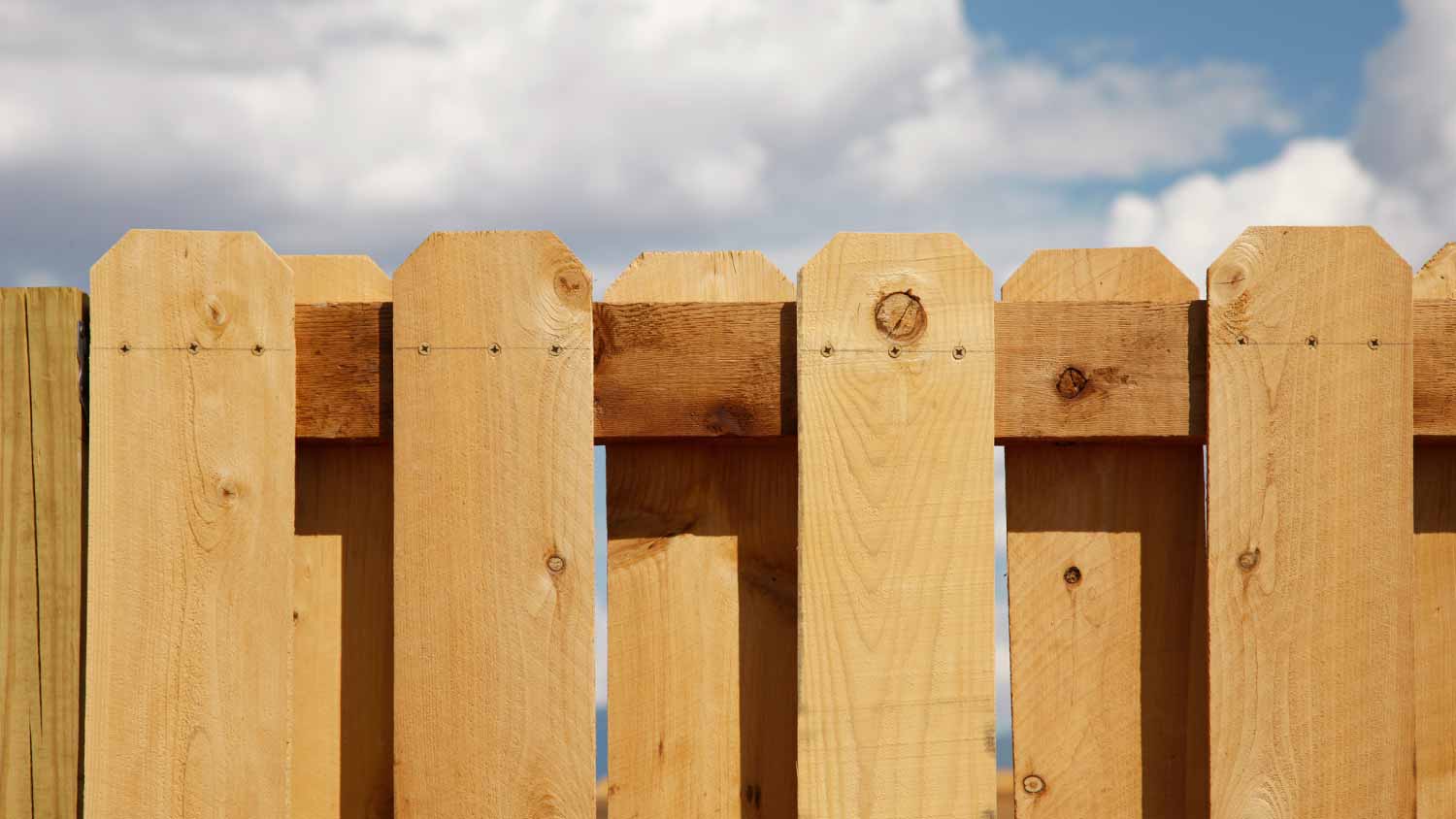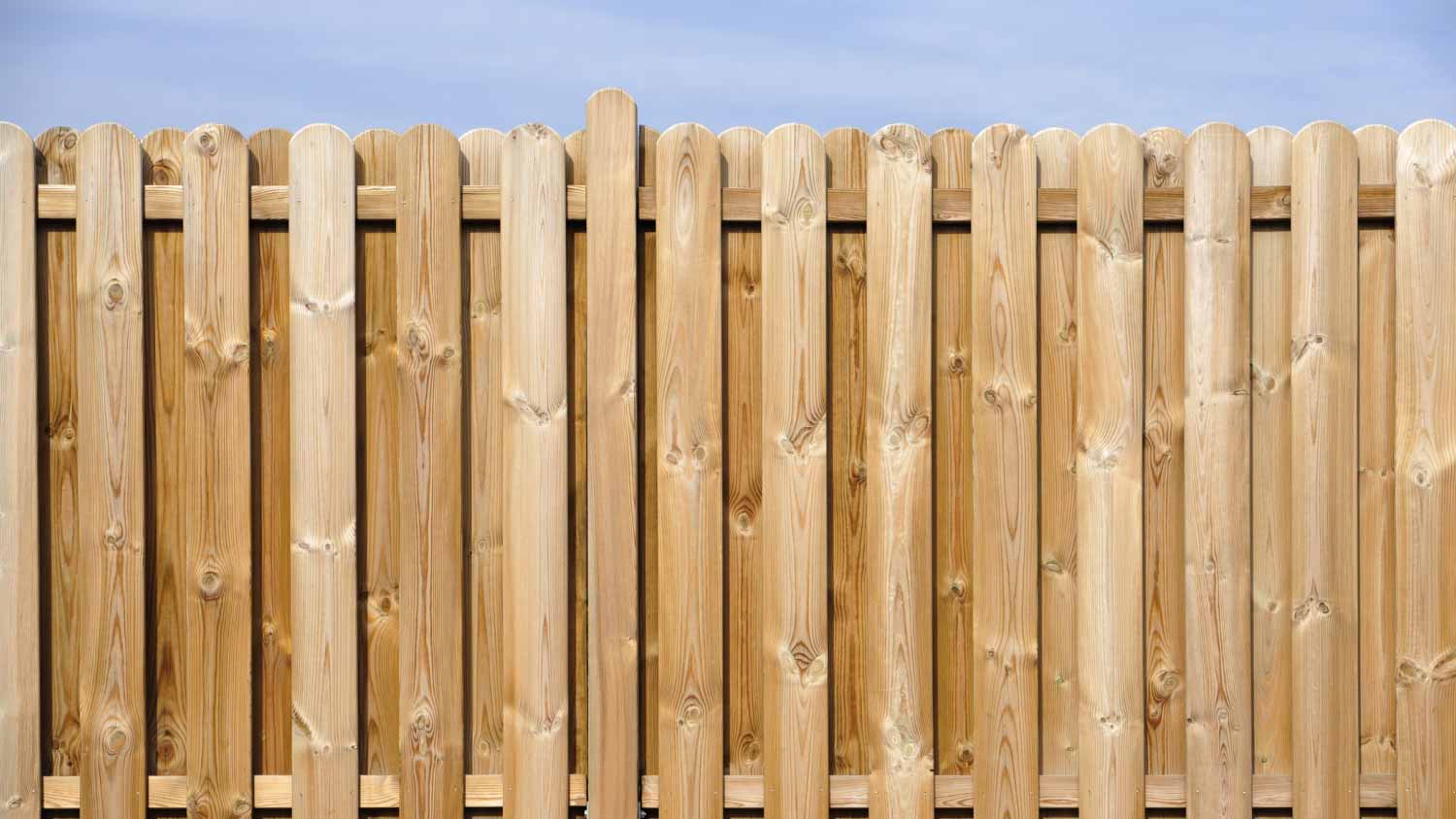How Much Does a Shadowbox Fence Cost? [2025 Data]
The cost for a shadowbox fence ranges from $2,700 to $5,800, with an average of $2,800.


Shadowbox fencing costs between $2,700 and $8,500 depending on the fence’s length, material, and height. But most homeowners spend an average of $2,800. This guide breaks down shadowbox fencing costs based on a variety of factors so you can make an informed budget for this home improvement project.
While you can install siding yourself, we recommend contacting a pro. Improper installation can decrease the life span of the siding and cost more money in the long run.
Shadowbox Fence Cost by Size
Shadowbox fences are typically priced by the linear foot, so longer fences cost more than shorter fences. Depending on factors like the fence’s material, you can expect to pay between $10 and $40 per linear foot.
| Fence Size (Linear Feet) | Average Cost |
|---|---|
| 100 | $1,000–$4,000 |
| 200 | $2,000–$8,000 |
| 300 | $3,000–$12,000 |
| 400 | $4,000–$16,000 |
| 500 | $5,000–$20,000 |
Shadowbox Fence Cost by Material

You can choose from a variety of materials for your new shadowbox fence. The type you choose can significantly affect your costs, with treated lumber being the most affordable and vinyl costing the most.
Treated Lumber
A treated lumber shadowbox fence costs between $10 and $15 per linear foot installed, making it the most budget-friendly option. While treated lumber typically lasts 10 to 15 years, you'll need to invest time in regular maintenance, including sealing and staining every two to three years, to prevent warping and rot.
Cedar
Cedar shadowbox fencing typically ranges from $20 to $23 per linear foot installed and lasts for 15 to 25 years with proper maintenance. It's durable and naturally resistant to both insects and rot, and it requires less maintenance than treated lumber, helping to justify its higher price point.
Redwood
Redwood shadowbox fencing costs between $15 and $30 per linear foot installed and lasts 20 to 25 years. It’s a premium wood that’s relatively low maintenance and offers natural resistance to decay and insects, along with an attractive appearance that many homeowners covet. Aside from its price, its main drawback is that availability can be limited in some regions.
Cypress
Installing a cypress shadowbox fence usually costs between $18 and $28 per linear foot. It's particularly well-suited for humid climates thanks to its natural weather resistance and ability to handle moisture without rotting. The wood also contains cypretine, which is a natural preservative that helps ward off insects and decay. With regular maintenance, cypress fencing lasts between 15 and 25 years.
Composite
Composite shadowbox fencing costs between $25 and $40 per linear foot installed and lasts 20 to 30 years or more. Made from a blend of recycled wood fibers and plastic, it won't rot, warp, or require staining, and it's highly resistant to fading and weathering. Its durability makes it ideal for long-term use, but it lacks the natural appearance of wood, which is a drawback for some homeowners.
Vinyl
At $27 to $40 per linear foot installed, vinyl is one of the most expensive shadowbox fencing options, but it’s also among the lowest maintenance and longest lasting, with a lifespan that ranges from 20 to 30 years or more. You'll never need to paint, stain, or seal vinyl—just occasional cleaning with a garden hose keeps it looking new. However, repairs can be difficult compared to wood since damaged sections usually need complete replacement.
Shadowbox Fence Pro Costs
Hiring a pro to install your shadowbox fence can increase your costs between 30% and 50%. Local wood fence installers usually charge between $10 and $30 per linear foot. They may also charge by the hour, which usually ranges from $40 to $60 per hour.
Additional Cost Factors
Beyond the fence’s size and material, several other factors affect the cost to install a shadowbox fence, including the number of gates and the site’s conditions.
Land Leveling
If you’re installing a fence on a slope, you may need to pay to regrade your lawn prior to installation, which usually costs between $1,000 and $3,200, depending on the size and pitch of the slope. If you’re on a slope and decide not to regrade your lawn, you may still need to pay extra in installation fees because your pro will need to customize the fencing material to align with the slope, which requires extra time and labor.
Old Fence Removal
If you have an existing fence that you’re replacing with a new one, you should factor in fence removal costs, which typically range from $3 to $7 per linear foot depending on the fence’s condition and materials. Some pros include removal costs in their estimate, while others charge for it separately so make sure to clarify which is true with your pro to avoid unexpected costs.
Permits
Permits to build a fence usually cost between $20 and $60. Not all new fences require a permit, but fences near certain utilities and zones or those exceeding six feet may require one. Check with your local authority before building the fence to clarify any permit requirements.
Site Conditions
The condition of your property can significantly affect the total cost of your shadowbox fence. If your yard has heavy vegetation, rocky soil, or elaborate tree root systems, your pro will need to spend extra time clearing the site or adjusting their installation approach. This added labor can increase costs, particularly if specialized equipment is required.
Number of Gates
In most cases, you’ll need to install a gate or two for your fence, which can cost anywhere from $100 to $2,000, depending on the gate’s material and features. Large, automatic gates will cost near the higher end of that spectrum, while basic walk-through gates cost near the lower end.
Concrete
Depending on the type of soil in your yard, you may need to use concrete to anchor the posts. For instance, sandy yards typically require concrete anchors to ensure the fence is durable. Concrete anchors may also be necessary for especially tall fences or those exposed to extreme weather. This added material can increase your costs by about $5 to $10 per post, but many pros include it in the overall estimate.
Height
The height of your fence directly impacts its cost. Taller fences require more materials and labor, which means higher prices. The most common fence height is around six feet tall, but if you want something higher, you can expect to pay 15% to 25% more for each additional foot.
DIY Shadowbox Fence Installation vs. Hiring a Pro

Installing your own shadowbox fence can save you up to 50% compared to hiring professionals since you'll eliminate labor costs. However, you may need to factor in the price of tools like a post-hole digger, level, circular saw, and power drill, which could add around $150 to your costs. Extensive projects may also require a powered auger to make post-hole digging more efficient, which usually costs $75 to $150 per day to rent.
While many savvy homeowners can successfully install a shadowbox fence themselves, getting the proper spacing between pickets, ensuring posts are plumb and set at the correct depth, and maintaining consistent height across grade changes require skill and knowledge. Mistakes in any of these areas could result in costly repairs. Additionally, what might take a professional crew just a day to complete could require several days of labor for a DIY installer. So, before starting a shadowbox fence project, carefully consider whether the cost savings justify the time investment and potential risks of doing it yourself.
Shadowbox Fence Replacement vs. Repair
Whether you should replace or repair your shadowbox fence depends on its current condition. If you're just dealing with a few cosmetic issues like split boards, missing pickets, or a wobbly section here and there, repairs make good financial sense.
But when you start seeing major problems like posts crumbling at ground level, large sections sagging or leaning, or widespread wood rot creeping up multiple boards, that's usually your fence waving the white flag. Generally, if fixing it up will cost you half or more of what a new fence would, it's probably worth investing in a new one.
Additionally, consider your fence’s average lifespan and how long you’ve had it. Most shadowbox fences last anywhere from 15 to 30 years with proper maintenance, depending on the material, so if yours is approaching the end of its projected lifespan, it’s a good idea to replace it.
How to Save Money On a Shadowbox Fence Installation
Installing a shadowbox fence can be a significant investment, but there are several ways to potentially save money on this project. Use the following tips to cut costs on this project.
Select standard pressure-treated boards rather than premium cedar or exotic hardwoods.
Build your fence at a standard six-foot height instead of opting for something taller.
Remove old fencing and prep the ground yourself so you don’t have to pay a pro to do it.
Reuse any existing posts or panels that are still in good shape.
Compare estimates from at least three different fence pros to find the best price.
Install the fence yourself if you’re confident in your DIY abilities.
Buy raw lumber and stain or seal it yourself instead of paying premium prices for pre-finished materials.
Schedule your fence project during the winter months when many installation companies offer better rates.
Does a Shadowbox Fence Increase Home Value?
Yes, a well-built shadowbox fence can increase your home’s value. The semi-private design boosts curb appeal by providing an attractive view from both sides of the fence, unlike standard privacy fences that have a distinct "good" side. This dual-sided aesthetic particularly appeals to buyers in upscale neighborhoods where fence appearance matters from all angles.
The shadowbox style also reduces wind load on the fence structure, and the spacing between boards allows for better air circulation to prevent moisture damage and extend the fence’s life. All of these factors can make your home more attractive in the eyes of potential buyers.
How Angi Gets Its Cost Data
Home is the most important place on earth, which is why Angi has helped more than 150 million homeowners transform their houses into homes they adore. To help homeowners with their next project, Angi provides readers with the most accurate cost data and upholds strict editorial standards. We extensively research project costs to develop the pricing data you see, so you can make the best decisions for you and your home. We rely on reputable sources, including the U.S. Bureau of Labor Statistics, academic journals, market studies, and interviews with industry experts—all to ensure our prices reflect real-world projects.
Want to help us improve our cost data? Send us a recent project quote to costquotes@angi.com. Quotes and personal information will not be shared publicly.
Frequently Asked Questions
Standard post spacing for shadowbox fences is 6 to 8 feet. This spacing ensures proper support for the heavy weight of overlapping pickets and prevents sagging between posts. However, areas with high winds, slopes, or unstable soil conditions may require closer spacing.
Shadowbox fence maintenance depends on the material. But for wood shadowbox fences, maintenance typically includes annual cleaning to prevent mold growth, resealing or staining every two to three years, and promptly replacing any damaged or rotted boards. Vinyl fencing, on the other hand, typically only requires annual cleaning with a hose to maintain its appearance.
Post depth for shadowbox fences should be at least two feet deep plus an additional foot for every foot of fence height above four feet. For a standard six-foot fence, this means a minimum depth of 3 feet. This depth helps to protect the structural integrity of your fence in the face of wind, soil movement, and seasonal ground shifts
















